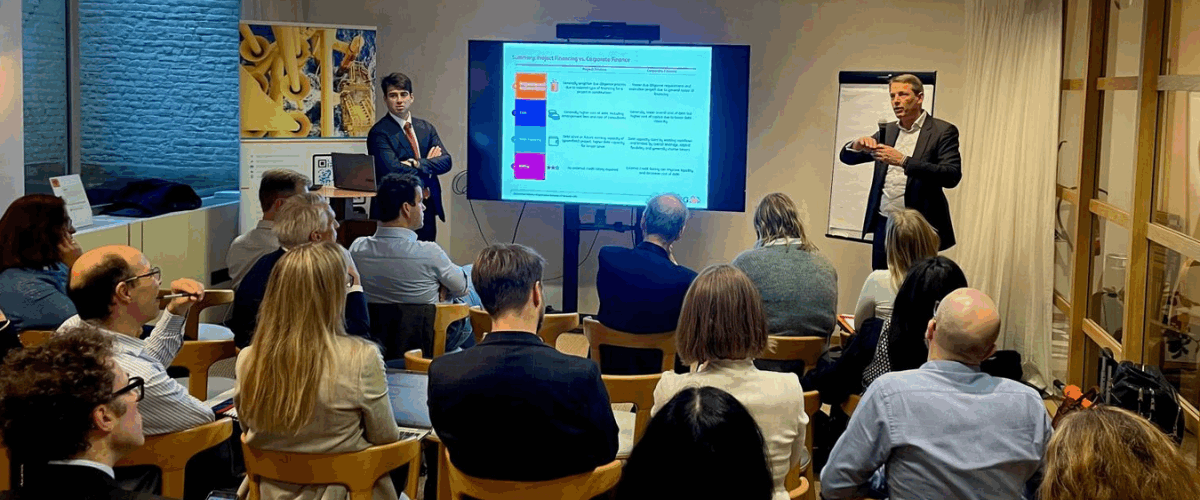Financing CCS projects: takeaways from the ZEP-ING workshop
Financing carbon capture and storage (CCS) projects was the focus of a workshop hosted by Zero Emissions Platform (ZEP) in partnership with ING on 27 November 2024 in Brussels, Belgium. The event convened 30 experts from industry, research, civil society, the financial sector, and public authorities to discuss financing mechanisms for CCS and the role of subsidies and regulatory frameworks.
About the workshop
Financing remains one of the most critical challenges for the large-scale deployment of CCS. While the technologies for capture, transport, and storage are proven, projects often face high upfront costs, uncertain revenue streams, and long investment horizons. These factors make bankability difficult without clear regulatory frameworks, supportive subsidy schemes, and tailored financing models.
The workshop provided insights into financing options for CCS projects across capture, transport, and storage, with the contribution of ING, a global bank with expertise in the energy sector. The discussion compared project finance with other financing models, highlighted the role of subsidies and regulatory frameworks, and explored sources of funds, like banks, institutions, and export credit agencies.
Case studies of CCS projects, including the Porthos CO2 Transport & Storage project, advised by ING, and the Track 1 Clusters in the United Kingdom, were also presented to illustrate bankability challenges and potential solutions.
A summary of the discussion is presented below.
Why project finance (PF) is a powerful tool
PF is a powerful tool for enabling large-scale investment in CCS and low-carbon projects. By structuring finance around project cash flows through a special purpose vehicle (SPV), PF allows high leverage and risk-sharing among stakeholders.
This makes projects more feasible for companies without strong balance sheets or for companies where project financing offers a lower cost of capital than corporate financing.
Project financing allows up to 70–80% of costs to be covered by loans. This lets keeping more of the cash free and still get a higher internal rate of returns (IRR). It is especially useful in joint ventures, since it reduces financial risk between partners.
PF versus other financing models
The workshop explored several alternatives to PF, highlighting their advantages and disadvantages. While some approaches are simpler or cheaper than PF, they often lack scalability. Besides, most of them still require government or policy support to make CCS projects viable.
Here’s a breakdown of the other financing models explored during the workshop:
- Corporate finance is cheaper and faster than PF but is tied to company balance sheets.
- Equity financing is flexible but costly, depending on shareholder risk appetite.
- Bonds are useful for large companies to access long-term capital, but are costly or restricted to investment-grade issuers.
- Green financing helps offtakers fund the purchase of low-carbon products, indirectly strengthening CCS business cases.
- Government schemes (CfDs, RAB, 45Q, SDE++) are essential for de-risking projects and enabling private financing.
Risk allocation and bankability
PF requires careful risk-sharing between sponsors, lenders, and contractors. Banks are particularly careful with first-of-a-kind (FOAK) projects and construction risks.
They also place strong emphasis on the financial reliability of partners, as well as the stability of the market, including:
- Technology readiness: PF is not viable below TRL 8–9.
- Completion risk: EPC structure, guarantees, and standby equity are decisive.
- Contracts: Long-term take-or-pay agreements are critical due to the lack of commodity value.
Structuring CCS value chains for PF
A major theme was how to design CCS value chains for PF. There is still a level of uncertainty about financing capture-only facilities. Integrated models across capture, transport, and storage are seen as more bankable than merchant-only assets (i.e., projects without long-term contracts or guarantees).
Overall:
- SPVs are effective, but if the emitter both owns the project company and is its customer, the financing becomes more complex and less attractive to lenders.
- Integrated value chains with co-ownership models are easier to finance than stand-alone pipelines/storage.
The role of policy, regulation, and long-term contracts
Government action and policy frameworks are essential for CCS finance. Long-term contracts, subsidies, or regulated models (RABs, CfDs, tax credits) provide certainty and de-risk investments. Policy evolution is expected, but early financial viability assessments are necessary to attract banks.
- Government support schemes such as RAB (UK), 45Q (US), and SDE++ (NL) are critical to enable PF.
- Long-term offtake contracts ensuring fixed price/volume deals are indispensable.
The sessions fostered rich and thought-provoking discussions, with members sharing their experiences and challenges in advancing projects to the critical Final Investment Decision (FID). A special thank you to Peter-Paul Ekelschot, Frederico Zugaro, Ramon van den Dugen, and Stijn Santen for sharing their expertise on the topic. We look forward to fostering more knowledge-sharing sessions to support the growth and development of CCS projects.

